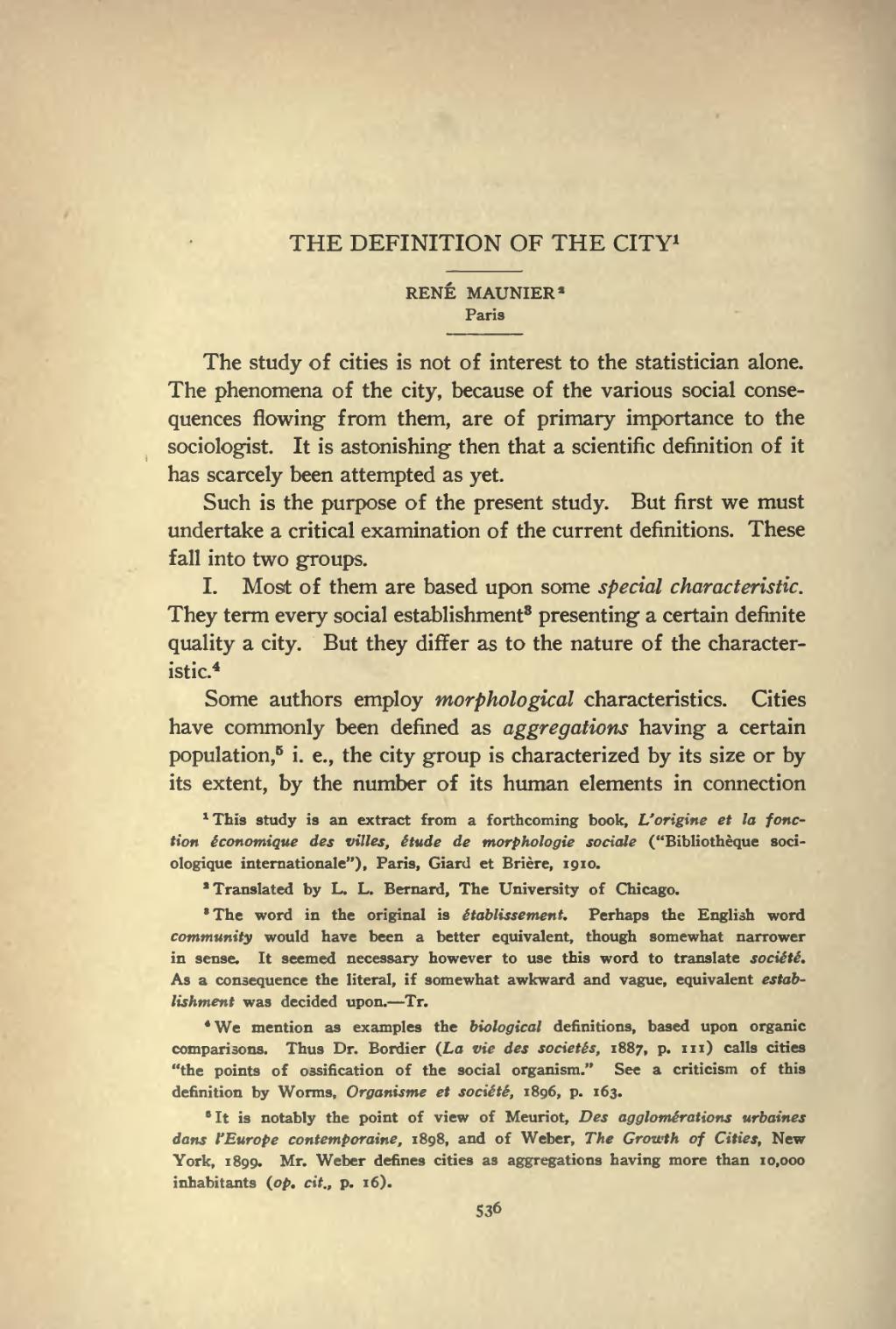THE DEFINITION OF THE CITY^
RENE MAUNIER Paris
The study of cities is not of interest to the statistician alone. The phenomena of the city, because of the various social conse- quences flowing from them, are of primary importance to the sociologist. It is astonishing then that a scientific definition of it has scarcely been attempted as yet.
Such is the purpose of the present study. But first we must undertake a critical examination of the current definitions. These fall into two groups.
I. Most of them are based upon some special characteristic. They term every social establishment^ presenting a certain definite quality a city. But they differ as to the nature of the character- istic*
Some authors employ morphological characteristics. Cities have commonly been defined as aggregations having a certain population,^ i. e., the city group is characterized by its size or by its extent, by the number of its human elements in connection
- This study is an extract from a forthcoming book, L'origine et la fonc-
tion iconomique des villes, etude de morphologie sociale ("Bibliotheque soci- ologique intemationale"), Paris, Giard et Briere, 1910.
'Translated by L. L. Bernard, The University of Chicago.
- The word in the original is Stablissement. Perhaps the English word
community would have been a better equivalent, though somewhat narrower in sense. It seemed necessary however to use this word to translate societS. As a consequence the literal, if somewhat awkward and vague, equivalent estab- lishment was decided upon. — Tr.
- We mention as examples the biological definitions, based upon organic
comparisons. Thus Dr. Bordier (La vie des societSs, 1887, p. iii) calls cities "the points of ossification of the social organism." See a criticism of this definition by Worms, Organisme et sociStS, 1896, p. 163.
- It is notably the point of view of Meuriot, Des agglomerations urbaines
dans I'Europe contemporaine, 1898, and of Weber, The Growth of Cities, New York, 1899. Mr. Weber defines cities as aggregations having more than 10,000 inhabitants (op. cit., p. 16).
536
